|
|
 |
|
|
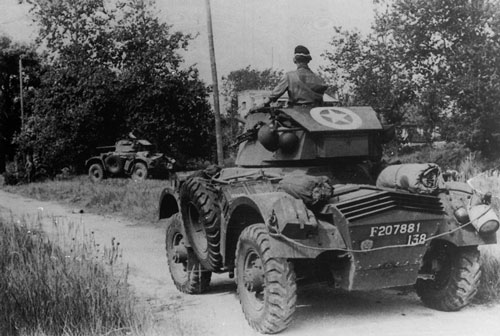 |
Brigade Piron
Intelligence Briefing of the Belgian Brigade in Normandy, Belgium and the Netherlands.
By Sven De Braekeleir
Belgian Forces in exile
In May 1940, after a meeting between the British War Office and the Belgian Captain-Commandant Charles Cumont (the military attaché at the Belgian Embassy in London), it was decided that (due to the deteriorating military situation in Belgium) surviving elements of the Belgian armed forces should be regrouped in Great Britain.
|
|
Three days later, the Belgian army capitulated,
but Belgian Prime Minister Jaspar called for all Belgian soldiers to
stay close to those who fight on, and to join him in Great Britain.
Stationed in Wales, the Belgian Forces in Great Britain (or FBGB) grew in number and in 1942 the decision was made to combine the infantry, artillery, armoured vehicles and engineers into one homogenous fighting unit. It became the 1st Belgian Independent Group under the command of Major Jean Piron (later Colonel).
From Normandy to Belgium
In the first week of August 1944, the ‘Brigade Piron’ arrived in Normandy with Dutch Brigade ‘Princes Irene’, the 2nd French Armoured Division (‘Division Leclerq”), the Polish Armoured Division of General Maczek, and the Czechoslovak Armoured Brigade of General Liska.
|
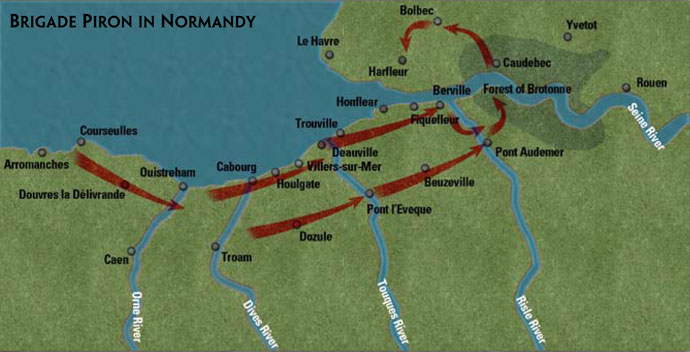 |
|
‘Brigade Piron’ was composed of three independent motorised companies, an armoured car squadron, an artillery group, an engineering company, and supply/transport units. Their (and the Dutch Brigade’s) assignment was to pursue enemy elements along the coast of Normandy, a task for which they were ideally suited due to their high degree of mobility and independent capability.
Upon arrival in Normandy, the Brigade was transferred to the British 6th Airborne Division and took over from the 4th Special Service Brigade (Commandos) on the right bank of the Orne, also known as the Pegasus Bridge sector.
|
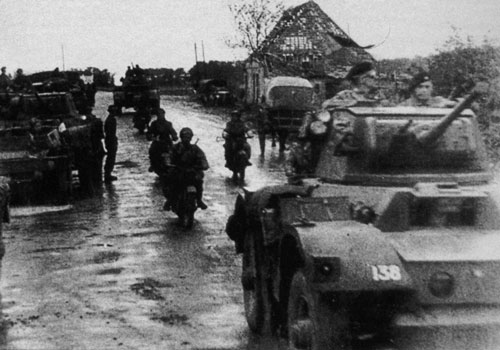 |
| On 17 August the 6th Airborne Division attacked
and the Brigade advanced to Franceville. After spending a lot of time
clearing mines and re-building bridges, the Brigade finally had another chance to advance, but walked into an ambush before the
Trouville Heights on 22 August after advancing through Villers-sur-Mer,
Touques and Deauville. In the following days, the 1st Motorised
Company, with artillery support, succeeded in removing German advance
posts. Over the course of the following few days more villages were
taken before the Brigade was transferred to the command of the British
49th Division. |
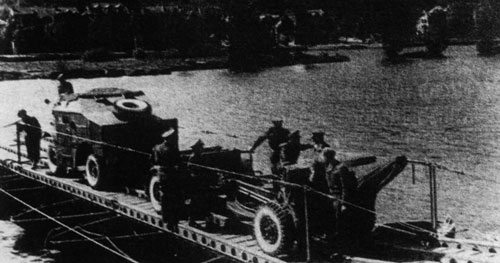 |
On 29 August the Brigade helped clear the Forest of Brotonne (where many Germans were trapped) and received orders to cross the river Seine and besiege the port of Le Havre. After a detailed reconnaissance of the ground behind enemy lines, the unit crossed the river. Contact with the enemy was made on 31 August, but just as the Belgian units were getting ready for the attack, the order was given to stop these preparations and move to the north, leaving the 49th Division behind.
|
On 2 September Colonel Piron received word from General Horrocks (commander British XXX Corps) that he intended to ‘enter Brussels tomorrow evening. Our tanks will open the road, and you will follow by eliminating any resistance along the way’. On 3 September Piron’s command car crossed the Belgian border and the Brigade arrived in Brussels the following morning (The Welsh Guards had arrived in the Belgian capital the evening before). New orders were received and the Brigade moved towards the Dutch border.
|
|
The Netherlands
In the early evening of 25 September the Brigade arrived in Holland and were attached to the US 1st Corps. They received tanks in support for an attack on Wessem, at the canal with the Meuse. At the same time, the Americans planned to advance on the German border. Both attacks failed, due to the excellent reorganisation of the German defence in the second half of September.
For the following few weeks the situation at the front remained more or less the same, with numerous offensive patrols on both sides.
|
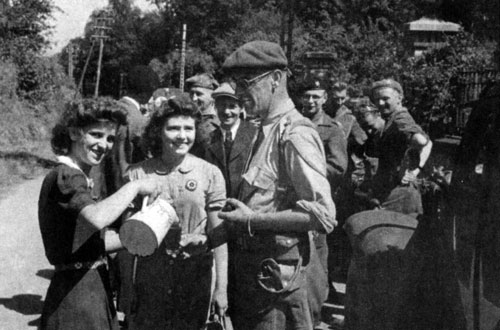 |
|
However, weeks of losses, casualties and death
had affected the ranks and the 18km long front could no longer be held
by the battalion sized Belgian unit. The Belgian Brigade was relieved
on 15 November and they returned to Belgium for rest and refit.
|
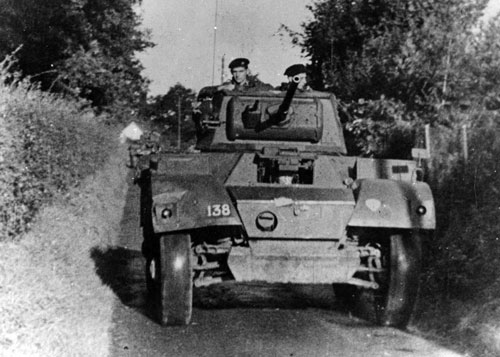 |
Re-organisation
They were re-organised and the structure of the Brigade was changed.
The infantry were transformed in to a Rifle Brigade and the Armoured
Car Squadron became the core of the 1st Armoured Regiment of the new
Belgian army. The three Motorised Companies become battalions due to an
increased amount of volunteers.
Back to the Netherlands
They moved into Holland again in April 1945, under the command of the 1st Canadian Armoured Brigade, where they took charge of the Canadian sector on the north bank of the Waal, and freed Opheusden.
|
|
A few other objectives were not reached and between 19 and 25 April,
the situation remained unchanged, with the Brigade mainly involved in
patrols and artillery bombardments.
After the cease-fire on 6 May the Brigade was sent to disarm the German
361. Infanteriedivision and the 20. Brigade near Cullenborg and Leerdam.
Brigade Piron
This PDF covers the Brigade before reorganisation in November 1944. It consists of options to field a Motor Company and an Armoured Car Company.
Brigade Piron PDF...
|
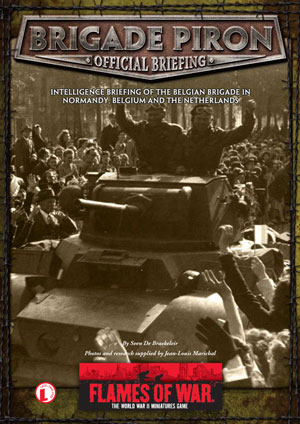 |
Last Updated On Thursday, May 27, 2010 by Wayne at Battlefront
|
|
|